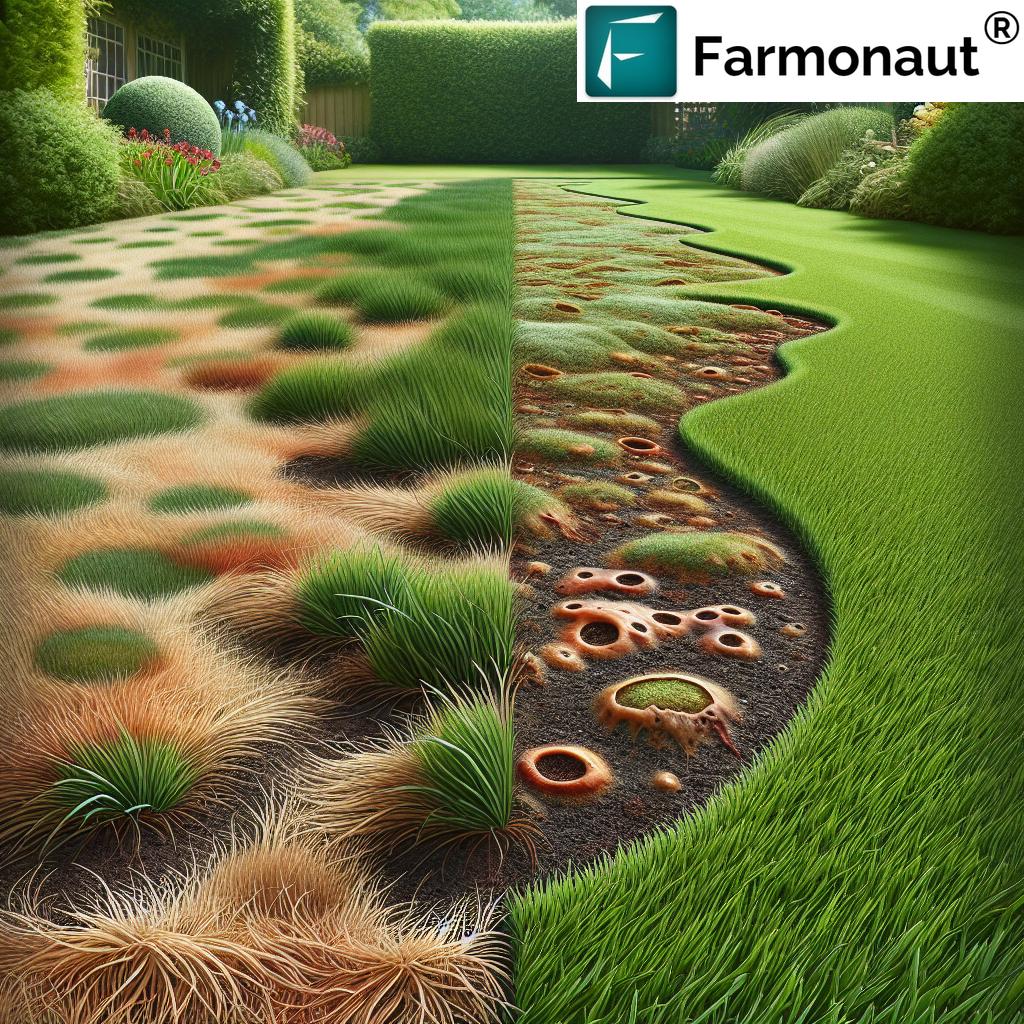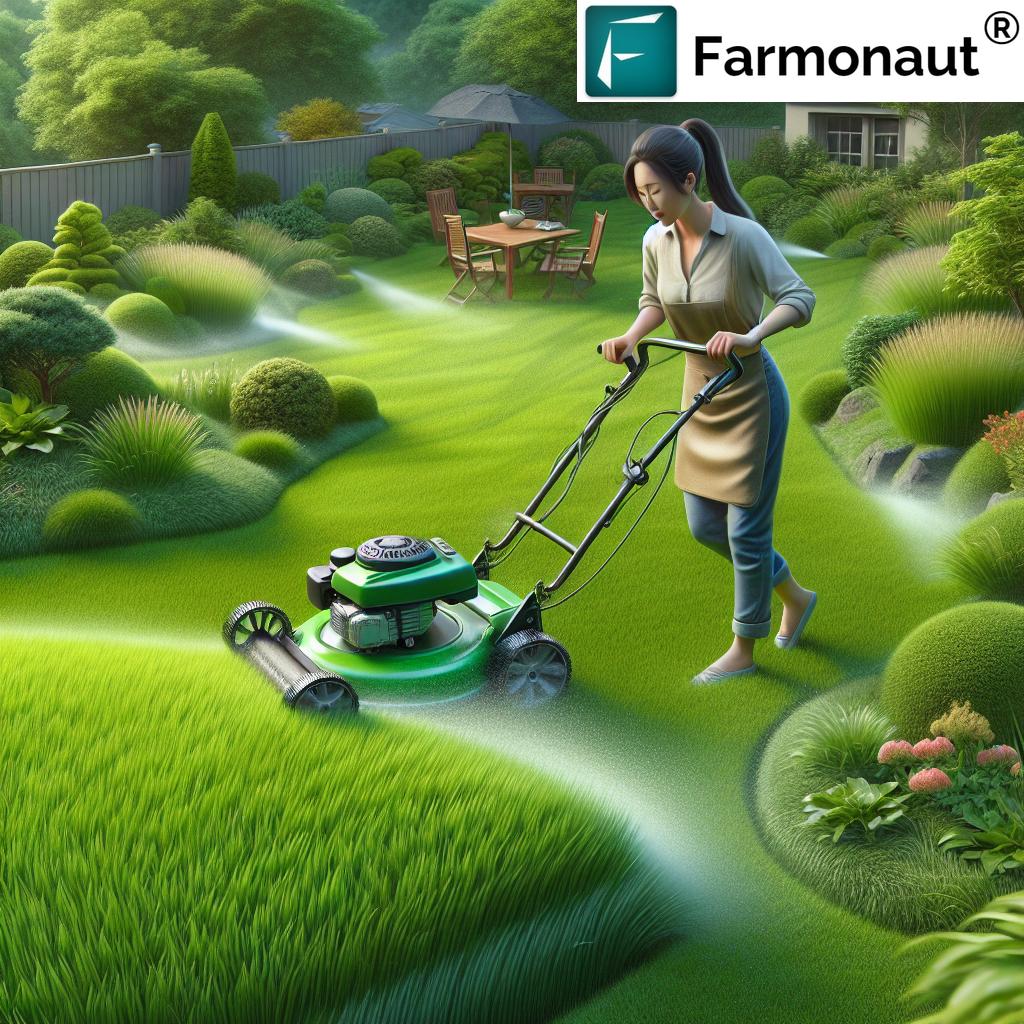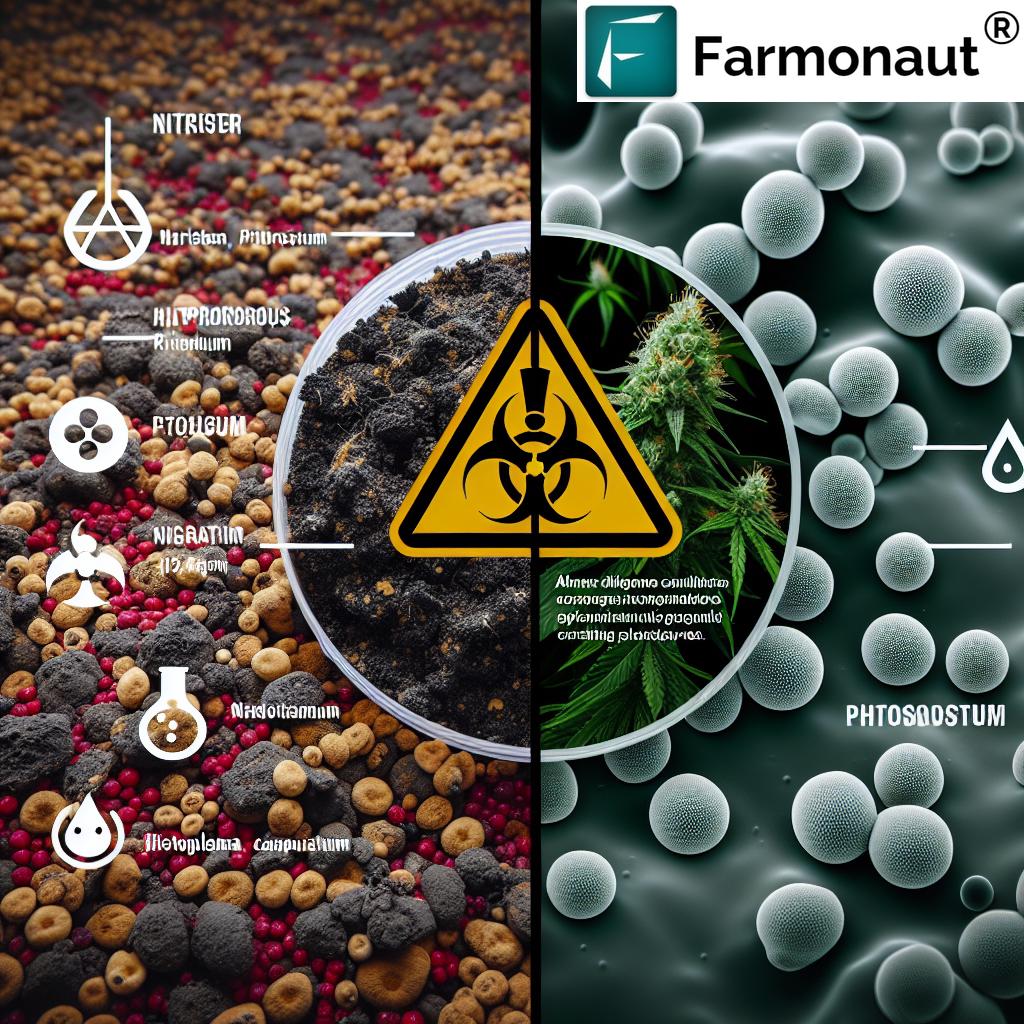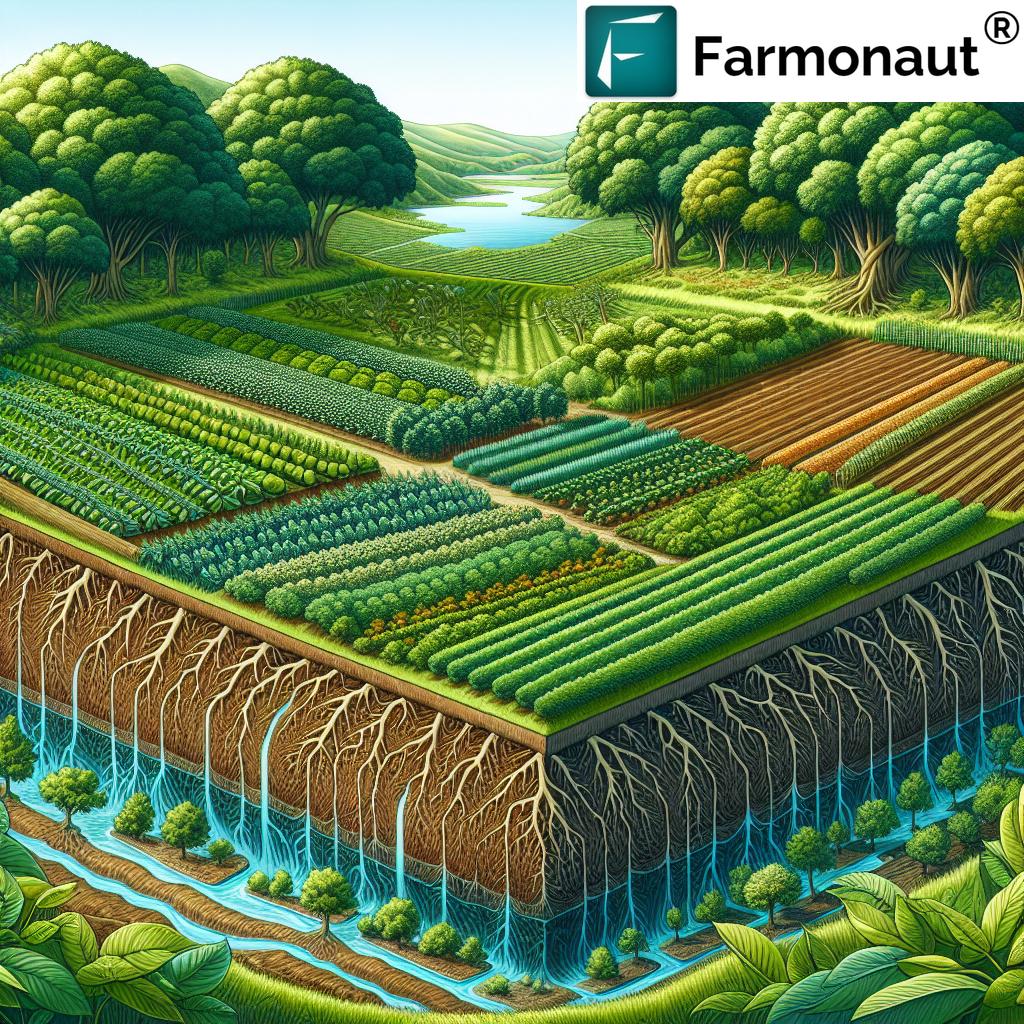Lawn Disease Control: 7 Powerful Steps for a Healthy Lawn
“Over 50% of lawn diseases can be prevented by following just 7 essential lawn care steps.”
Introduction: Our Journey Toward a Lush, Disease-Resistant Lawn
Maintaining a lush, green lawn is a source of pride and satisfaction for homeowners. However, a vibrant turf isn’t just about looks—it’s about health, resilience, and effective lawn disease control. If you’ve ever wondered, “Why is my grass turning brown?” or noticed odd patches and spots, you’re not alone. Common lawn diseases are a frequent challenge that can compromise the health and appearance of our grass.
In this in-depth guide, we’ll walk together through the 7 powerful, science-backed steps for identifying, preventing, and controlling fungal diseases in lawns. We’ll focus on proven proper lawn care practices, from mowing to watering, to keep our turf thriving through all conditions. Along the way, we’ll highlight how advanced agri-technologies—like those from Farmonaut—can empower us with actionable insights for sustainable, healthy lawns, no matter where we are.
Understanding Common Lawn Diseases: Signs, Causes, and Impact
To stay ahead in our quest for a healthy, vibrant lawn, we must master the art of identifying common lawn diseases. Knowledge is our best defense. Let’s explore the leading culprits and learn how they manifest.
Rust (Puccinia, Uromyces species)
- Description: Rust appears as orange to reddish-brown flecks or raised pustules on grass blades.
- Grass Types Affected: Bluegrass, tall fescue, ryegrass, zoysiagrass.
- Favorable Conditions: Warm, humid weather and low nitrogen levels.
- Symptoms: Lawns appear thin and have an orange or red hue, with infected grass looking weak.
Gray Leaf Spot (Pyricularia grisea)
- Description: Tan to gray leaf spots with purple or brown margins.
- Grass Types Affected: St. Augustinegrass and ryegrass.
- Favorable Conditions: Warm, rainy summer periods.
- Symptoms: Severe infections make the lawn appear brownish or scorched.
Necrotic Ring Spot (Ophiosphaerella korrae)
- Description: Yellow, ring-shaped patches in turf, leading to dead grass within rings.
- Grass Types Affected: Kentucky bluegrass, other cool-season grasses.
- Favorable Conditions: Spring and fall (13–28°C).
- Symptoms: Patchy rings, particularly when the soil is compacted or thatch is thick.
Dollar Spot
- Description: Small, dollar-sized tan or straw-colored patches.
- Grass Types Affected: All common turfgrasses, especially under low nitrogen conditions.
- Favorable Conditions: Warm, humid weather, prolonged leaf wetness, low nitrogen.
- Symptoms: Blades blighted at the tips, patches merge in severe infection.
Fusarium Patch / Pink Snow Mold (Microdochium nivale)
- Description: Orange to red-brown spots, often with a pinkish-white, web-like growth (mycelium) at the patch edge.
- Grass Types Affected: Cool-season grasses (fescues, bluegrass).
- Favorable Conditions: Cool, wet periods.
- Symptoms: Patches can rapidly expand under moist, cool conditions.
In each case, early detection—combined with informed interventions—will help us control and even prevent lawn fungus from taking hold.
Factors Contributing to Lawn Disease: Why Is My Grass Turning Brown?
The appearance, health, and lushness of our lawns are the result of numerous underlying factors. Let’s break down the most significant contributors to lawn disease, so we can address them with purpose:
- Improper Watering: Overwatering or late-day watering creates extended leaf wetness, an ideal setting for fungus growth. Tip: Water deeply but less often, early in the morning to reduce wetness and encourage deep root development.
- Nutrient Imbalances: Both nutrient deficiencies (mainly nitrogen) and excesses create stressed, disease-susceptible grass. Tip: Regular soil testing and balanced fertilization are essential.
- Thatch Buildup: Thatch thicker than 1/2 inch harbors pathogens and restricts water infiltration. Tip: Dethatching and aeration limit buildup, improving soil penetration.
- Soil Compaction: Compacted soil limits root spread, making lawns weak and prone to disease. Tip: Aerate annually, especially in high-traffic areas.
- Mowing Practices: Cutting grass too short (scalping) stresses it; dull mower blades cause torn, infection-prone edges. Tip: Use best mowing practices for healthy lawns: keep blades sharp and adjust cutting height to your grass species.
- Weather Conditions: Warm, humid, and rainy periods increase the risk of fungal outbreaks.
- Poor Drainage: Continually soggy soil from improper grading or drainage can suffocate roots and exacerbate disease.
“Proper mowing height reduces the risk of fungal lawn diseases by up to 30%.”
Lawn Disease Control: 7 Powerful Steps for a Healthy Lawn
Below, we present the most effective, actionable measures for combating fungal diseases and maintaining a lush, green lawn. These steps combine decades of turf sciences, practical experience, and advanced technologies like satellite-based monitoring.
- Identify Problems Early: Regular Lawn Inspection and Monitoring
- What to look for: Discolored patches, spots, rings, or changes in turf thickness or color.
- Why it works: Early intervention often means easier treatment and a quicker return to a healthy lawn.
- Tools: Leverage digital crop health monitoring platforms like Farmonaut for deeper, more consistent oversight—including NDVI vegetation indices and real-time alerts for stress zones. These tools help us spot subtle changes invisible to the naked eye, giving us a crucial head start.
Try Farmonaut’s satellite-based crop health monitoring for proactive lawn management
.
- Practice Proper Watering Techniques
- Water deeply and less often, aiming for early morning irrigation. This ensures grass blades dry out during the day, minimizing leaf wetness and reducing fungal disease risk.
- General rule: 1–1.5 inches of water per week, ideally in two sessions rather than daily sprinkles.
- Tip: Use a rain gauge or straight-sided container to check weekly water application.
- Balance Lawn Nutrient Levels Through Responsible Fertilization
- Regular soil testing ensures we target only the nutrients our lawn truly needs—preventing both shortages and excess.
- Utilize slow-release fertilizers and avoid over-fertilizing, which can promote succulent, disease-prone growth.
- Seasonal adjustments: Apply nitrogen in spring for cool-season lawns and late spring/early summer for warm-season varieties.
- Farmonaut’s Carbon Footprinting service can help us monitor fertilizer-related emissions, promoting sustainability while improving results.
- Control Thatch Buildup With Dethatching and Aeration
- Thatch is a dense, spongy layer of dead stems and roots just above the soil. If it exceeds ½ inch, it retains moisture and harbors fungi.
- Action: Dethatch our lawn each year if needed, and aerate compacted soils in the fall (for cool-season grasses) or spring (for warm-season grasses).
- Adopt the Best Mowing Practices for Healthy Lawns
- Set our mower blades to the recommended height for our grass species (generally 2½–3½” for most turf grasses).
- Keep blades sharp; dull mower blades tear, rather than cut, grass blades, making lawns more susceptible to disease.
- Never remove more than 1/3 of the blade height in a single mowing session.
- Explore Farmonaut’s large scale farm management tools for professional-grade turf care and equipment monitoring.
- Overseed With Disease-Resistant Varieties
- Periodically overseed with newer, disease-resistant turfgrass cultivars to fill in bare spots and outcompete potential pathogens.
- Choose varieties suited to regional conditions (e.g., drought-resistant ryegrass or bluegrass) and resistant to the diseases prevalent in our area.
- Apply Treatments When Needed, Responsibly
- If a disease outbreak is confirmed, apply fungicides as a last resort, always according to label and safety guidelines.
- Prioritize cultural practices (watering, mowing, fertilization, aeration) for lasting results and minimal chemical dependency.
- Persistent or severe issues? Consult with turf professionals for tailored advice and explore Farmonaut for monitoring and advisory support.
Lawn Disease Identification and Control Guide
For straightforward, at-a-glance comparison, use this table to identify and address common grass diseases swiftly and effectively. Estimated figures offer actionable context for your planning.
| Lawn Disease | Symptoms/Identification (Frequency) |
Prevention Tips (Effectiveness) |
Control Measures (Recovery Time) |
|---|---|---|---|
| Rust (Puccinia/Uromyces) |
Orange/red flecks & pustules on blades; orange cast to lawn. 30% lawns annually |
Maintain nitrogen, optimal mowing height; avoid prolonged wetness. Reduces risk 40–60% |
Remove clippings, adjust nutrition; fungicides if needed. 2–3 weeks |
| Gray Leaf Spot (Pyricularia grisea) |
Tan/gray spots with purple margins; brown, scorched look. 10–15% lawns |
Enhance drainage, proper watering & fertilization. Prevents up to 50% |
Reduce watering, use resistant varieties, fungicides as last resort. 2–4 weeks |
| Necrotic Ring Spot (O. korrae) |
Yellow ring patches, dying turf in spring/fall. Up to 20% in cool climates |
Aerate regularly, balance nutrients; overseed with resistant varieties. 50% risk reduction |
Adjust practices, improve soil. 4–8 weeks |
| Dollar Spot |
Silver-dollar, tan patches; blighted blade tips. 30–50% lawns in summer |
Mow high, avoid drought; nitrogen at correct levels. 30–60% reduction |
Balanced fertilization, fungicides if severe. 2–3 weeks |
| Fusarium Patch/Pink Snow Mold |
Orange/red-brown patches; white-pink mycelium in cool, wet weather. 5–10% lawns, post-winter |
Improve drainage, avoid over-fertilizing, dethatch. Prevents 50% cases |
Aeration, remove debris, apply labeled fungicides if needed. 3–6 weeks |
| Brown Patch |
Circular brown/gray patches, fast spread in heat/humidity. 20–30% lawns in warm, wet periods |
Water early morning, mow high, aerate, avoid evening irrigation. Reduces risk 40% |
Remove thatch/debris, fungicides for severe outbreak. 2–4 weeks |
API and Developer Access for Advanced Turf Monitoring
For those with technical expertise or enterprise needs,
Farmonaut’s API and
Developer Docs
make it possible to integrate satellite weather and crop health data into your own lawn care solutions.
Transparency is integral to modern lawn and farm care. With Farmonaut’s blockchain-based traceability tools, users in the horticulture and landscape sectors can guarantee the authenticity of turf management processes, while Fleet Management solutions help professionals monitor equipment usage for consistent, reliable lawn results.
Farmonaut Affordable Subscription Plans
How Farmonaut Supports Healthy Lawns and Turf Management
Our commitment to proper lawn care practices can reach new levels with high-tech, user-friendly platforms like Farmonaut. Precision agriculture tools are no longer exclusive to commercial farming—they’re available to everyone who seeks a lush green lawn, robust disease resistance, and sustainability.
- Satellite-Based Monitoring: Farmonaut delivers field-level insights on grass and turf health, soil moisture, and even pest or disease risk using multispectral satellite imagery.
- Automated Recommendations: The Jeevn AI Advisory System analyzes satellite data, local weather, and past input to suggest tailored routines—water scheduling, mowing alerts, and fertilization timing for your turf’s exact needs.
- Environmental Sustainability: Carbon footprinting helps reduce input waste, while blockchain solutions assure all stakeholders of transparent, sustainable lawn management—crucial for professionals and organizations.
- Broad Accessibility: Subscription-based access and native apps for Android, iOS, browser, and API allow us to manage turf anywhere—with affordable plans for individuals, landscapers, and enterprises.
Farmonaut is a technology platform committed to accessible precision agriculture and lawn care—not an input seller, marketplace, or regulatory body. Its mission is to empower us, the users, with actionable, data-driven solutions for healthier soils, greener grass, and transparent management.
Ready for the next step? Try Farmonaut’s monitoring platform or explore API integrations for tailored, data-rich lawn care.
Frequently Asked Questions (FAQs)
1. What are the most common lawn diseases?
The most common lawn diseases include rust, dollar spot, gray leaf spot, necrotic ring spot, fusarium patch (pink snow mold), and brown patch. Each disease is influenced by local climate, grass species, cultural practices, and environmental conditions.
2. How do I know if my lawn has a disease or a nutrient problem?
Nutrient deficiencies often cause uniform discoloration, while diseases tend to create patches, spots, or rings with irregular borders. Soil testing and close visual inspection are essential for correct diagnosis.
3. What are the best mowing practices for healthy lawns?
Mow at the proper height for your grass type (generally 2.5–3.5 inches), never remove more than one-third of the blade’s length, and always keep mower blades sharp to prevent ragged edges susceptible to infections.
4. How can I prevent lawn fungus without chemicals?
Focus on proper lawn care practices: correct watering (deep, not frequent), adequate fertilization (based on soil testing), mowing at recommended height, and regular dethatching/aeration all help to prevent lawn fungus naturally.
5. When should I consider using fungicides?
Use fungicides as a last resort for widespread or persistent grass diseases that don’t respond to cultural controls. Always follow the label and combine with proper maintenance for best results.
6. Can lawn diseases spread to other parts of my yard?
Yes, fungal spores can spread through wind, water, equipment, or even shoes. That’s why it’s crucial to address outbreaks early and clean tools between uses.
7. How does Farmonaut’s technology help with lawn health?
Farmonaut provides real-time health monitoring, disease/pest risk identification, weather-driven alerts, and actionable recommendations, helping us stay one step ahead in turf care and resource management.
Conclusion: How to Maintain a Lush Green Lawn—Your Healthy, Disease-Free Turf Awaits!
Understanding, preventing, and treating lawn diseases is a journey—one that combines attentive care, informed action, and modern technology. When we stay vigilant for early signs, use best mowing and watering practices, balance nutrients, and leverage advanced tools like Farmonaut for data-driven management, we set our lawns up for enduring health.
Remember: Most fungal diseases in lawns are preventable. With the 7 powerful steps outlined in this guide, we empower ourselves to maintain not only a picture-perfect, lush green lawn but also a resilient, thriving ecosystem. From the first hint of a brown spot to achieving a vibrant, resilient turf, let’s commit to these proven strategies—our grass, families, and communities will thank us.
Start now: Try Farmonaut’s lawn/turf monitoring platform or explore carbon footprinting, traceability, and resource management—designed for everyone who believes in healthy, sustainable greenery.


















